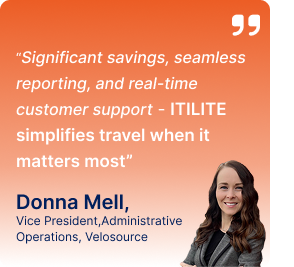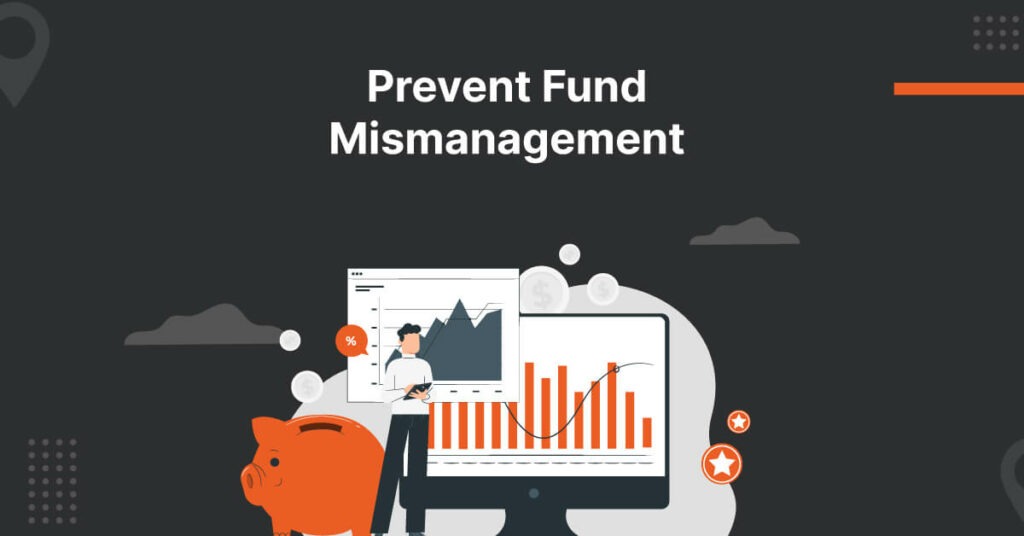
Business spend reconciliation means aligning expenses from business trips with the company’s records. It means ensuring all expenses are real, proper paperwork, and company rules are followed. Expense reconciliation involves checking receipts and invoices and matching expenses with the budget. If there are any mistakes, they’re found and fixed quickly. The aim is to accurately track all travel costs, follow policies, and pay back employees on time.
If business trip expenses don’t match company records, this can lead to several issues. Incorrect expenses can result in inaccurate financial reporting, affecting budgeting and financial analysis. Therefore, companies must take steps to simplify this process.
Top 5 Ways to Streamline Expense Reconciliation
Here are the 5 ways in which expense reconcilation can be enhanced:
1. Implement Automated Expense Management Software
Automated expense management software simplifies tracking, submitting, and reconciling expenses. It replaces manual methods like spreadsheets with an integrated system. Mobile apps enable employees to submit expenses. Whereas, backend solutions aid managers in reviewing expenses. Some of its benefits include:
- Reduces Manual Entry : Automation significantly reduces the need for manual data entry. Employees can easily capture expenses by photographing receipts with their smartphones, which the software can then automatically process and categorize.
- Minimizes Errors : Manual expense reporting is prone to errors, such as incorrect data entry, lost receipts, and miscalculations.
- Speeds Up the Expense Reconciliation Process : Automation accelerates the entire business spend reconciliation process. Expenses are submitted, reviewed, and approved much faster because the software streamlines these workflows.
Features to Look for:
- Receipt Scanning : Look for software that offers robust receipt scanning capabilities. Employees should be able to take photos of receipts using their mobile devices. This helps to reconcile expenses in a simpler way.
- Integration with Corporate Credit Cards : This feature allows transactions to be automatically imported into the expense management system
- User-Friendly Interface : A user-friendly interface is crucial for encouraging employee adoption and ensuring that the software is used effectively.
Suggested Read:
The Importance of Corporate Credit Card Reconciliation
2. Establish Clear Expense Policies
Clear expense policies are important for managing corporate travel expenses effectively. They serve as rules for employees, outlining what is considered an allowable expense. In addition, they frame the limits on spend, and the necessary documents for reimbursement.
- Creating Policies : Creating effective expense policies helps control corporate travel expenses. Precise limits set daily meal allowances, maximum hotel rates by location, and acceptable flight travel classes.
- Communication : Effectively communicating policies to all employees is crucial for ensuring understanding and compliance. Policy documents must also be easily accessible. They must be provided on the company intranet, employee handbook, or directly within the software.
- Regular Updates : Expense policies should be dynamic and regularly reviewed to remain relevant and effective. Conduct an annual review of the policies to ensure they reflect current economic conditions, market trends, and feedback from employees.
Suggested Read:
Your Go-To Expense Report Checklist
3. Use Corporate Credit Cards
Corporate credit cards are a powerful tool for simplifying expense reconciliation in business travel. Reconcile expenses by centralizing travel expenses on company-issued cards; businesses can streamline the process of monitoring and managing employee spending
Advantages
Using corporate credit cards offers several significant benefits:
- Streamlined Reporting : Corporate credit cards automatically generate detailed transaction reports, simplifying the expense reporting process for employees and finance teams.
- Enhanced Control Over Spending : Corporate credit cards allow businesses to set spending limits and monitor transactions in real time.
- Compliance : Corporate credit cards play a vital role in ensuring travel policy compliance and reducing the risk of fraud.
4. Provide Comprehensive Training for Employees
Comprehensive training for employees on expense reconciliation is essential. It ensures accurate, timely, and policy-compliant expense submissions. Without proper training, employees may struggle with the tools or misunderstand policies. These mistakes can delay the business spend reconciliation process.
- Train employees to effectively use expense management software. They should learn to navigate the interface, submit expense reports, and utilize mobile apps for on-the-go expense tracking.
- Explain company expense policies thoroughly. Employees need to grasp allowable expenses, spending limits, and processes. Use practical examples to clarify policy guidelines.
- Teach employees how to accurately document expenses. Stress the importance of detailed reporting and provide support on submitting valid receipts and invoices.
5. Conduct Regular Audits and Reviews
Regular audits help in accuracy and compliance in corporate travel expense management. Audits systematically examine expense reports and financial records. They ensure all expenses are legitimate, documented, and follow company policies. Regular audits detect discrepancies, and prevent fraud.
Audits allow companies to benchmark their performance over time. By comparing audit results from different periods, you can assess expense practices. This helps track improvements and measure effectiveness.
Audit Process:
The audit process helps in expense reconciliation and typically involves several key steps:
- Selecting Samples : Auditors pick a representative sample of expense reports to review. The sample size and criteria vary based on the audit scope, organization size, and expense volume.
- Reviewing Reports : Each selected expense report is thoroughly examined to ensure compliance with company policies. Auditors verify that expense amounts do not exceed policy limits and that there are no duplicate claims.
- Checking for Discrepancies : Auditors look for discrepancies, such as missing receipts, incorrect amounts, and unauthorized expenses. Any anomalies or suspicious activities are flagged for further investigation.
- Clarifications : If necessary, auditors may interview employees or request additional information to clarify any uncertainties. This step helps them understand the context of certain expenses and resolve any ambiguities.
- Reporting Findings : After completing the review, auditors compile their findings into a report. This report outlines any issues identified, including policy violations, errors, and potential fraud. The report also provides recommendations for corrective actions and improvements.
Implement Travel and Expense Management Software
Travel and expense management software is really important for any company trying to organize its money better. It provides real-time visibility into travel spending. Therefore, allowing finance teams to monitor expenses and track budgets.
Opt for itilite corporate travel management software. It empowers businesses to simplify their travel management processes. It ensures policy compliance and achieves cost savings. With its user-friendly interface and robust analytics, itilite offers a comprehensive solution. It suits businesses of all sizes looking to streamline their travel and expense management workflows. Book a demo now.













